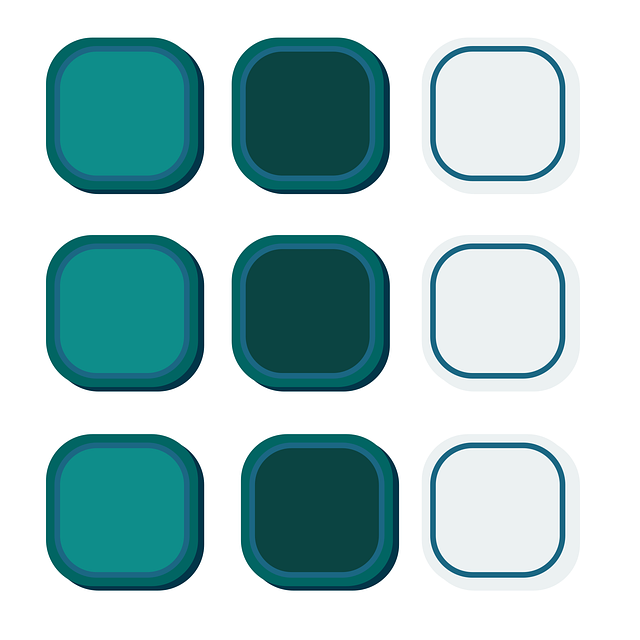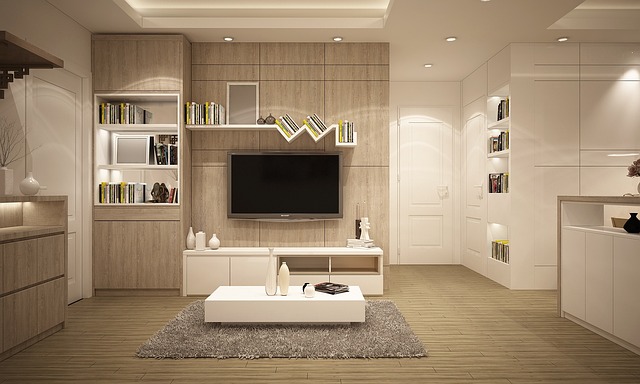Custom UI design solutions drive digital product success by creating tailored, intuitive experiences that resonate with users. Through understanding user behavior, designers craft visually appealing interfaces fostering seamless interactions and enhancing engagement. This approach leads to increased retention, satisfaction, and conversions, setting businesses apart in a competitive market. Leveraging AI and ML, integrating voice interaction, and prioritizing accessibility, the future of UI design aims for personalized, eco-friendly, and inclusive experiences that captivate users.
In today’s competitive digital landscape, a one-size-fits-all approach to UI design simply won’t cut it. Custom UI/UX design solutions are transforming how businesses engage users and drive growth. This comprehensive guide explores the significance of tailored UI design for enhancing user experience, boosting conversions, and achieving a competitive edge. From understanding key components to highlighting successful implementations and future trends, discover why investing in custom UI design is a strategic must.
Understanding Custom UI/UX Design Solutions

Custom UI/UX design solutions are tailored experiences that go beyond standard templates, ensuring your digital product stands out in a crowded market. It involves creating user interfaces (UI) and user experiences (UX) that align perfectly with your brand identity, target audience, and business objectives.
By understanding user behavior, preferences, and pain points, designers craft intuitive, visually appealing interfaces that foster seamless interactions. These solutions aren’t one-size-fits-all; they’re meticulously crafted to offer a unique journey, enhancing user engagement and driving conversions. This personalized approach can significantly impact the success of an application or website in today’s competitive digital landscape.
The Importance of Tailored UI Design for User Engagement

In today’s digital landscape, user engagement is paramount for any business aiming to thrive online. A key driver of this engagement is the user interface (UI) design, which directly impacts how users interact with a product or service. Tailored UI design plays a crucial role in capturing and retaining users’ attention, ensuring they have a seamless and enjoyable experience. By understanding individual user needs and preferences, designers can create interfaces that are intuitive, visually appealing, and highly responsive to user actions.
This personalized approach goes beyond basic aesthetics. It involves carefully crafting every element on the screen, from color schemes and typography to button placements and navigation flows. A well-designed UI not only enhances visual appeal but also simplifies complex tasks, encourages user exploration, and fosters a sense of familiarity and control. Ultimately, a tailored UI design solution contributes significantly to higher user retention rates, increased time spent on platforms, and improved overall satisfaction—essential metrics for any digital business’s success.
Unlocking Business Potential with Personalized UX Experiences

In today’s competitive market, businesses are recognizing the immense power of personalized user experiences in driving growth and engagement. Unlocking this potential begins with understanding that each brand has a unique identity, and its UI design plays a pivotal role in reflecting this. Custom UI/UX design solutions empower companies to create visually appealing and intuitive interfaces tailored to their target audience’s preferences and behaviors. By deviating from one-size-fits-all approaches, businesses can offer experiences that foster stronger connections with customers.
Personalized UX experiences significantly enhance user satisfaction and loyalty. When a brand presents a UI designed specifically for its niche, it not only caters to functional needs but also taps into emotional responses. This level of customization can lead to increased conversion rates, longer user sessions, and positive word-of-mouth recommendations. With the right UI design strategies, businesses can truly stand out in a crowded digital landscape, ensuring their products or services resonate with users on a deeper level.
Key Components of Effective Custom UI Design

Effective custom UI design hinges on several key components that work in harmony to create a seamless user experience. Firstly, intuitive navigation is paramount; users should effortlessly traverse the interface, guided by clear labels and logical structures. Visual elements, including color schemes, typography, and iconography, must be carefully chosen to align with brand identity while ensuring readability and aesthetic appeal.
Interactivity and feedback mechanisms are also vital. Users need to know what actions they can take and what outcomes to expect; well-designed UI provides real-time feedback through hover effects, animations, and form validation messages. Lastly, accessibility considerations cannot be overlooked—a thoughtful design accommodates users of diverse abilities, ensuring inclusivity and usability for all.
Benefits of Investing in Custom UI/UX Services

Investing in custom UI/UX services offers numerous advantages for businesses and developers. One of the key benefits is enhanced user engagement, as a tailored UI design creates intuitive and visually appealing interfaces that captivate users and improve their overall experience. By understanding user behavior and preferences, custom UI/UX solutions can transform abstract data into meaningful content, making complex information accessible and engaging.
Furthermore, custom UI designs ensure brand consistency and unique identity. They allow businesses to create an interface that aligns perfectly with their brand values, colors, typography, and style guidelines. This coherence across all digital touchpoints enhances brand recognition and builds trust with users. Customization also facilitates better functionality and performance, as the design is optimized for specific user needs and business goals, resulting in increased productivity and improved user satisfaction.
Case Studies: Successful Custom UI/UX Implementations

Custom UI/UX design solutions have proven to be game-changers for numerous businesses, leading to improved user engagement and heightened brand loyalty. When implemented successfully, these designs can transform a company’s digital presence, setting it apart from competitors. Case studies of successful custom UI/UX implementations highlight the power of tailored experiences. For instance, a recent study showed how a leading e-commerce platform enhanced its mobile app with a personalized UI design, resulting in a 30% increase in user retention and a 25% boost in average order value.
Another compelling example involves a SaaS company that redesigned its dashboard to better align with the needs of its diverse user base. By employing UX research and iterative design processes, they created an intuitive interface that simplified complex tasks, leading to increased user satisfaction and productivity. These real-world applications underscore the significant impact custom UI/UX designs can have on business success, solidifying the importance of prioritizing user experience in today’s digital landscape.
Future Trends Shaping Custom UI/UX Design Solutions

The future of UI/UX design is constantly evolving, shaped by emerging technologies and shifting user expectations. One prominent trend is the increased integration of artificial intelligence (AI) and machine learning (ML). These tools are enabling more personalized and intuitive user experiences, from predictive content to adaptive interfaces that learn and grow with individual users. Voice interaction and natural language processing (NLP) are also on the rise, transforming how users interact with digital products.
Additionally, sustainability and accessibility are becoming key considerations in UI/UX design. Designers are increasingly focusing on creating eco-friendly interfaces that reduce environmental impact, as well as ensuring inclusivity for all users, regardless of ability or background. This involves employing clean, minimalist designs, optimizing for various devices and screen sizes, and implementing features that cater to different needs, like customizable color schemes and text resizability.
